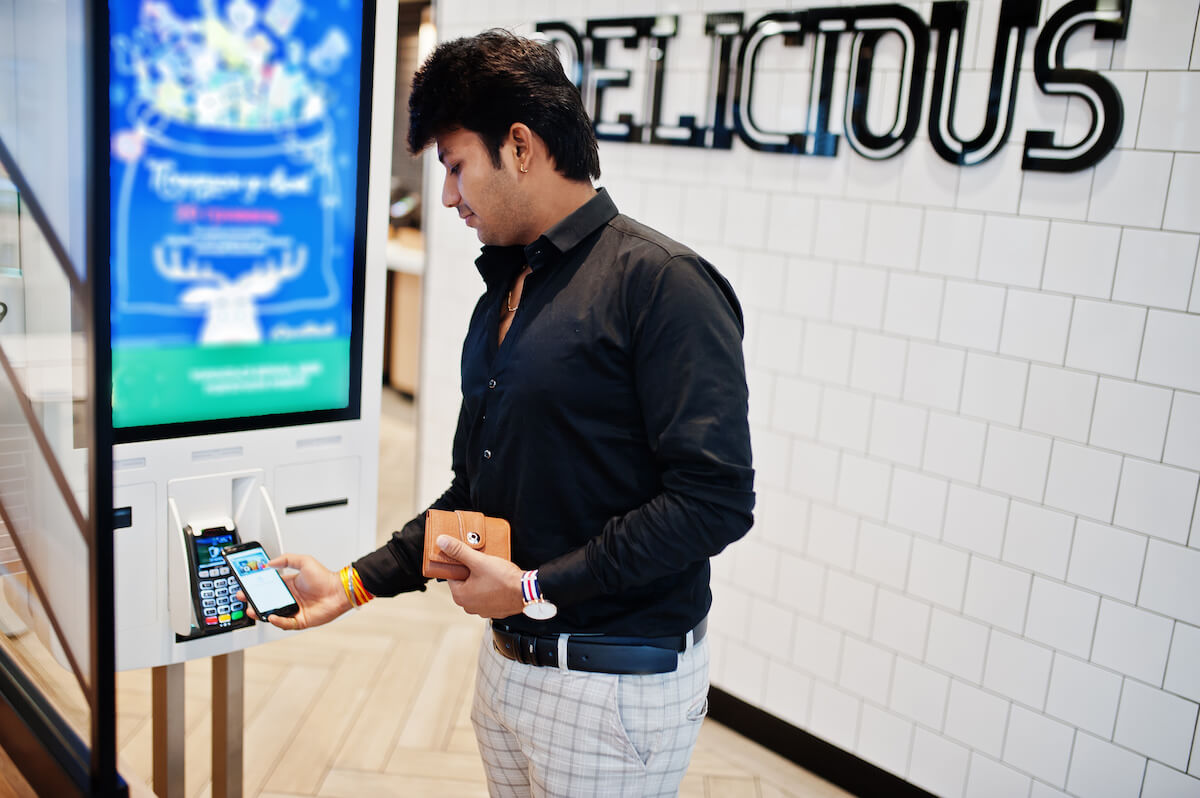- How AI in restaurants is supporting recovery in the food-service industry for restaurants to come back stronger than before
- By automating the ordering process, voice AI helps struggling restaurants boost sales and serve more guests, despite continued labor shortages
- Even as the hiring crisis improves, voice AI is a long-term solution for restaurant owners, as it’s a powerful tool that frees up workers for higher-value tasks like food preparation, order fulfillment and in-person service
Ask a restaurant operator how to create an exceptional customer experience and they might not think of technology as their go-to solution. More and more often, however, restaurants are turning to AI (artificial intelligence) as a means of giving guests personalized attention that overwhelmed staff otherwise wouldn’t be able to match. The results have been striking, and guests and operators alike agree that AI in restaurants is here to stay.
The food-service industry hasn’t always adapted to new technology right away, but the pandemic motivated them to explore and embrace digital transformation. From social distancing, dining room closures and ongoing staffing shortages, the restaurant dining experience evolved to food delivery mobile apps, self-serve kiosks to survive. Virtual assistants have become the next step in that evolution, and now those restaurants aren’t just surviving. They’re thriving.
Voice AI and machine learning are two of the biggest advancements in restaurant technology. These developments are changing the ordering experience to improve guest satisfaction, make jobs less demanding and more efficient for staff, and boost the bottom line for owners and restaurant operators.
How AI in restaurants is redefining operations

Artificial intelligence is the simulation and automation of otherwise repetitive and time-consuming tasks traditionally carried out by team members, where technology performs functions without any direct intervention. AI uses machine learning to continuously improve its performance by recording interactions and experiences and analyzing those data points over time.
For example, AI helps to automate routine tasks such as restaurant order taking. Many Domino’s franchises use voice AI to answer phone calls and take guest orders seamlessly. Instead of phone calls being missed while team members juggle making pizzas, packaging orders and tending to people at the counter, a digital ordering assistant interacts with guests on the phone and sends orders directly to the POS. This automation has doubled order volume during peak hours because team members can shift their time and focus to prep, fulfillment and in-person service.
Robotics are another classic example of AI in restaurants, where fast food and QSR concepts are testing out some eye-catching innovations. Domino’s takes the spotlight again here, rolling out a test fleet of pizza delivery service drones where pizza orders are delivered by self-driving vehicles. Diners place their orders through mobile apps or online, then receive an access pin for pick up and can track the status as their order is delivered by an AI-powered drone. Others are using AI in a similar fashion to develop sophisticated equipment to help streamline food preparation, cut down on food costs, and optimize labor costs.
While robotics play a role in food-service industry innovations, the high cost of development have restaurant chains looking for other ways to benefit from automating tasks with AI technology. From simple BOH day-labeling machines to more advanced AI in drive-thrus with license plate and facial recognition, just about every major chain is jumping on the opportunity to automate tedious tasks through AI. The result is a win-win-win for guests, staff and owners alike.
Using these AI solutions doesn’t have to be a pipe dream for restaurants. With rising labor costs, food pricing and growing demand, implementing AI technology for the restaurant industry is an accessible and wise long-term investment for all restaurateurs.
Voice AI streamlines the ordering process

One of the benefits of voice AI is that it helps manage and optimize the ordering experience. A virtual ordering assistant is available at any time of day to take orders over the phone, drive-thru or kiosks. A voice ordering assistant is trained on menu items, available modifications and upselling add-on items, allowing a more seamless interaction with the guest and delivering a high-quality guest experience.
AI can be a part of an owner’s toolbox since it always frees up workers for higher-value tasks like food prep, in-person guest service and order fulfillment. This not only eases the burden of labor shortages, but it can quickly save the day if team members call out sick or there are other emergencies that leave you short-staffed during a shift. Or, in the case of Fazoli’s, a Kentucky-based Italian chain, voice AI can keep a restaurant from closing when a winter storm prevents people from coming into work.
Restaurant owners are catching on to this evolution—voice AI is already sweeping the restaurant industry and being implemented by large national chains. Key brands are taking notice of how AI reduces friction in the ordering process in drive-thru lanes and phone orders. They’re seeing the potential for freeing up staff members to other tasks instead of manual order taking.
With AI’s extensive knowledge of a restaurant’s offerings and the capacity to comprehend and respond to guest’s requests or questions in real time, large chains can give guests the individualized attention they deserve and overall better service. Plus, a voice ordering assistant can receive unlimited orders at once, further decreasing guest wait times.
Voice AI as a long-term solution to boost sales and retention

The modern restaurant that uses voice AI enjoys higher sales and higher average tickets thanks to the ability to automatically answer the phone every time a guest calls, even when staff are busy, therefore capturing more orders. Thanks to automation, workers don’t have to drop everything to answer a call. Long hold times and busy phone signals are eliminated. Virtual ordering assistants answer limitless calls at once, and never call out sick for their shift, so the phone is always answered. Many restaurateurs have no idea just how many calls they were missing out on until they automate their ordering process and see a spike in sales.
In addition, virtual ordering assistants never miss the opportunity to upsell the guest on their order. This leads to a higher average ticket, whereas busy workers may skip or forget to upsell because they are rushed, juggling several tasks at once or stressed out when the line is wrapped around the corner. Voice AI isn’t limited the way staff are, and it’s automated to upsell menu items for every single transaction. By analyzing past order data and trends, voice AI instantly provides tailored recommendations to increase the average ticket amount by up to 25%.
AI is also a game changer for staff retention by reducing the stress levels in a restaurant’s high-volume environment. When virtual ordering assistants handle answering the phone and order taking, staff members juggle less and their jobs become more manageable. Staff members no longer have to be overwhelmed and constantly shifting their focus by multi-tasking.
In an industry known for high employee turnover, voice AI can help cultivate a workplace culture that allows workers to develop skills that advance their career. When workers engage in high-value tasks, they find less stress, more meaning and purpose in their role and restaurants see higher employee retention rates. With a long-term solution like voice AI, restaurants will maximize their labor efficiencies by allocating workers to high-priority duties that benefit both business and employee morale.
AI benefits restaurants beyond the bottom line
The pandemic became a pivotal moment for the restaurant industry. Operators who saw the opportunity to integrate new technology into their restaurant were able to survive and recover quickly as they adapted to a new way of doing business. As guests return to restaurants at pre-pandemic levels and the industry adapts to this new normal, it’s clear that automating the ordering process with AI technology is key to the future of restaurants.
Voice AI is programmed to be context-aware and engage in a fluid, natural conversation as if the guest were speaking to an actual restaurant team member. By taking on a tedious task of answering the phone or typing in an order, these AI-powered virtual ordering assistants allow workers to focus their attention on preparing food properly and creating a more positive guest experience.
By serving guests better, solutions like voice AI will help you gain guest loyalty on top of improving your bottom-line numbers. Along with enhancing the immediate guest experience, voice AI helps build guest loyalty as AI has a flawless memory: A virtual ordering assistant remembers a guest’s name, last order, favorite order and most recent interaction. They can provide an immediate update on wait time for pickup or delivery because they recognize the number the guest is calling from. Guests get their food faster because the restaurant is running more smoothly thanks to orders being automated. With no busy phone signal or long hold time added on top of that, they’ll want to call and order from you again soon.
Voice AI helps restaurants adapt, grow and expand with new solutions to familiar challenges the industry will always face. More than 1,100 stores in 40 states are enjoying the benefits of automating their drive-thru and phone orders with ConverseNow’s best-in-class voice AI-powered digital ordering assistants for restaurants. Schedule a demo to find out how ConverseNow can support your restaurant.